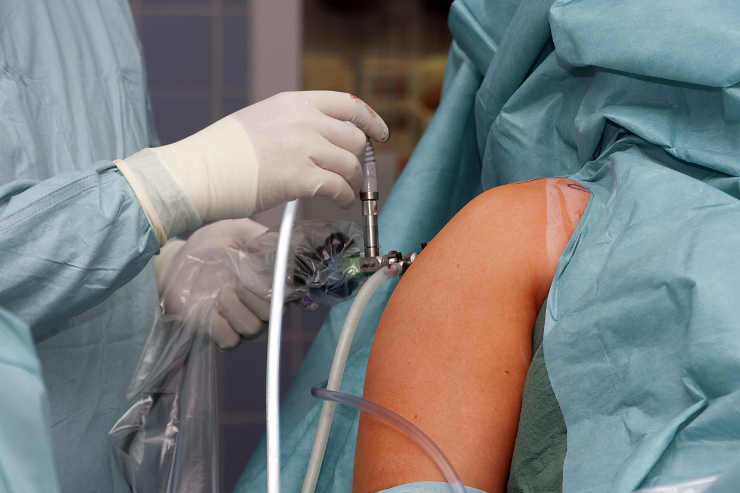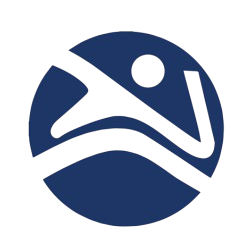Shoulder Arthroscopy
- Home
- Shoulder Arthroscopy

Shoulder arthroscopy is a minimally invasive procedure used to diagnose and treat shoulder issues. It involves inserting a small camera, called an arthroscope, into the shoulder joint through tiny incisions. This allows the surgeon to view the inside of the shoulder and perform necessary treatments using specialized instruments.
Bankart Repair for Shoulder Dislocation
The shoulder joint, with its wide range of motion, is naturally prone to instability. One key structure that helps stabilize the shoulder is the capsulolabral complex, which can tear during dislocation, leading to a Bankart lesion. Repeated dislocations can cause further damage, such as a Hill-Sachs lesion on the humeral head or injury to the glenoid.
Additional Arthroscopic Procedures for Shoulder Dislocation
In some dislocation cases, the glenoid rim of the shoulder socket may fracture, resulting in a Bony Bankart lesion. Dr. Das treats this using an all-arthroscopic technique. In cases, especially with professional athletes, where the risk of redislocation remains after a Bankart repair due to a small defect in the shoulder ball, Dr. Das performs a procedure called “Remplissage,” where a suture anchor and part of the rotator cuff tendon (infraspinatus) are used to fill in the defect.
Latarjet Technique
For severe damage to both the humeral head and glenoid, the Latarjet technique is preferred. This open procedure involves transferring part of the coracoid process bone and tendon to the deficient glenoid socket, helping to reconstruct the joint and reinforce the ligaments, preventing future dislocations.
Arthroscopic Surgery for Shoulder Dislocation
During keyhole surgery for shoulder dislocation, the torn capsulolabral complex is reattached to the glenoid rim with suture anchors. For cases involving a Bony Bankart lesion or Hill-Sachs lesion, additional arthroscopic techniques like Remplissage are performed. These advanced procedures are done using minimally invasive methods.
Cost of Arthroscopic Procedures for Shoulder Dislocation
Dr. Das uses high-quality US or European-imported implants for shoulder arthroscopy, ensuring excellent surgical outcomes and high patient satisfaction. The procedure is offered at an affordable package cost, covering surgery, hospital stay, implants, and physiotherapy. Contact us for more information on the package.
Rotator Cuff Repair
The rotator cuff consists of four muscles that form a tendon covering the ball of the shoulder joint, essential for movement and stability. Tears in the rotator cuff, common after age 40 or from sports and repetitive overhead activities, often cause shoulder pain and weakness.
Is Rotator Cuff Repair Surgery Necessary?
Not all tears require surgery. Physiotherapy and pain relief may be effective for partial-thickness tears. However, full-thickness tears are generally recommended for surgical repair, as the tendon cannot heal on its own once retracted from its attachment point.
Rotator Cuff Repair Surgery
Dr. Das uses an arthroscopic approach to repair torn rotator cuffs. The surgery involves smoothing the shoulder blade (acromion), clearing the bursa, and reattaching the tendon to its original position using suture anchors. The procedure takes about 1.5 hours and may require a brief hospital stay depending on rehabilitation needs.
Cost of Rotator Cuff Surgery
Dr. Das utilizes premium US or European-imported equipment for arthroscopic rotator cuff repair, ensuring excellent outcomes and patient satisfaction. The procedure is offered as part of an affordable package that includes surgery, hospital stay, implants, and physiotherapy. Contact us for package details.
Arthroscopic Capsular Release for Frozen Shoulder
Frozen shoulder, or adhesive capsulitis, leads to shoulder stiffness and can be very painful. It typically affects individuals between 30 and 60 years old, with women and diabetics being more susceptible. It can occur after an injury or for no apparent reason.
Is Arthroscopic Surgery Necessary for Frozen Shoulder?
Initial treatment includes exercises, physical therapy, steroid injections, and hydrodistention. If these methods fail, arthroscopic capsular release surgery is recommended.
Arthroscopic Capsular Release Surgery
Using an arthroscopic technique, Dr. Das performs capsular release by cutting the tight capsule with a radiofrequency wand. The procedure takes about an hour and can be done as a day case or with an overnight hospital stay, depending on rehabilitation needs.
Cost of Arthroscopic Capsular Release Surgery
Dr. Das uses high-quality imported equipment for arthroscopic capsular release, ensuring optimal outcomes and patient satisfaction. The surgery is available at an affordable package price that includes hospital stay and physiotherapy. Contact us for package details.
Arthroscopic Subacromial Decompression for Impingement Syndrome
Shoulder impingement syndrome occurs when the rotator cuff tendons rub against the underside of the shoulder blade (acromion), causing pain and swelling. It commonly affects athletes and individuals engaged in repetitive overhead activities.
Is Arthroscopic Subacromial Decompression Surgery Necessary?
Initial treatment includes exercises and steroid injections. If these fail, arthroscopic subacromial decompression surgery is recommended.
Arthroscopic Subacromial Decompression Surgery
Dr. Das performs subacromial decompression using an arthroscopic technique, where the bursa is cleared and the acromion is flattened. The surgery takes about an hour, with hospital stay based on rehabilitation needs.
Cost of Arthroscopic Subacromial Decompression Surgery
Dr. Das uses imported equipment for this procedure, ensuring the best outcomes. The surgery is offered at an affordable package cost, including hospital stay and physiotherapy. Contact us for pricing details.
Acromioclavicular Joint (ACJ) Reconstruction
The ACJ is the joint where the collarbone meets the shoulder blade. It plays a crucial role in shoulder stability and movement, but can be injured during falls or trauma, particularly in athletes, or affected by arthritis.
Is AC Joint Surgery Necessary?
Surgery is needed if the ACJ becomes unstable or arthritic. Initially, arthritis may be managed with steroid injections, but surgery may be required if the joint remains painful.
ACJ Surgery
Dr. Das uses arthroscopic techniques to excise the ACJ in cases of arthritis or reconstruct the ligaments using a patient’s own tendon or artificial ligaments if the joint is unstable. The surgery takes 1–1.5 hours, with a short hospital stay based on rehabilitation needs.
Cost of ACJ Surgery
Dr. Das utilizes premium imported equipment for ACJ surgery, ensuring top results. The procedure is offered at an affordable package rate, which includes hospital stay and physiotherapy. Contact us for more information on the package.
